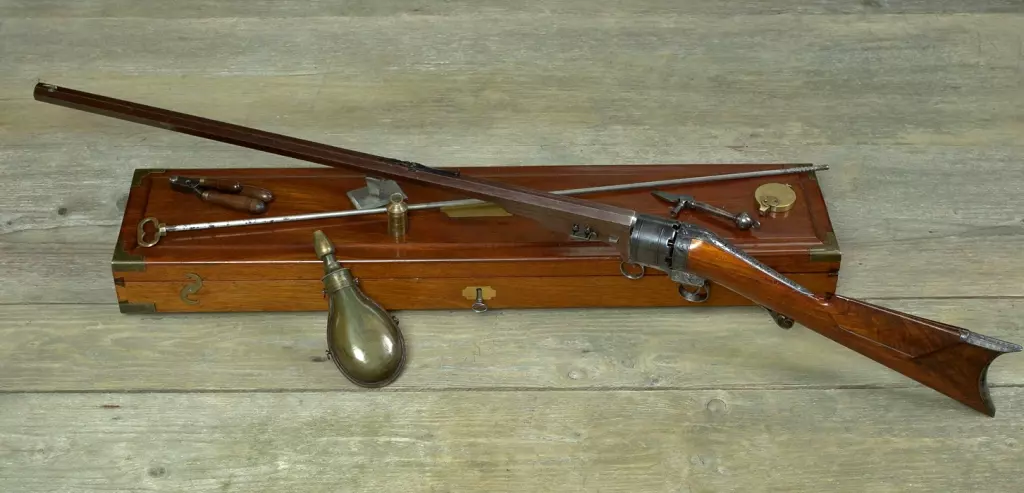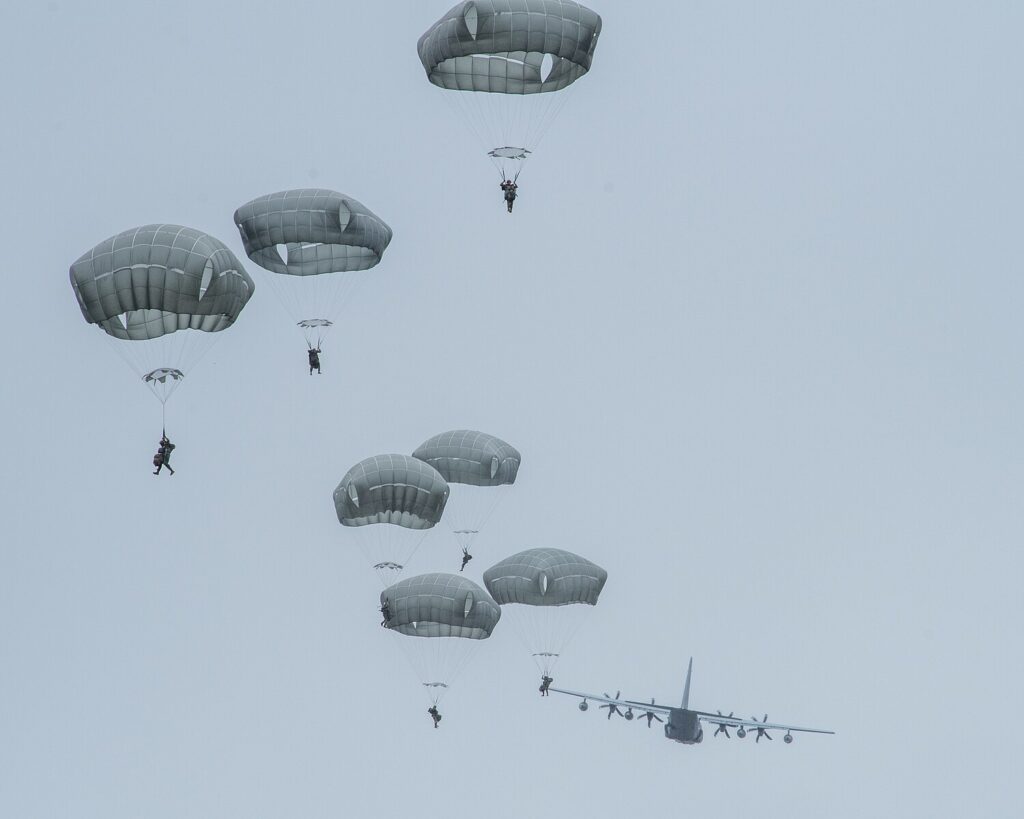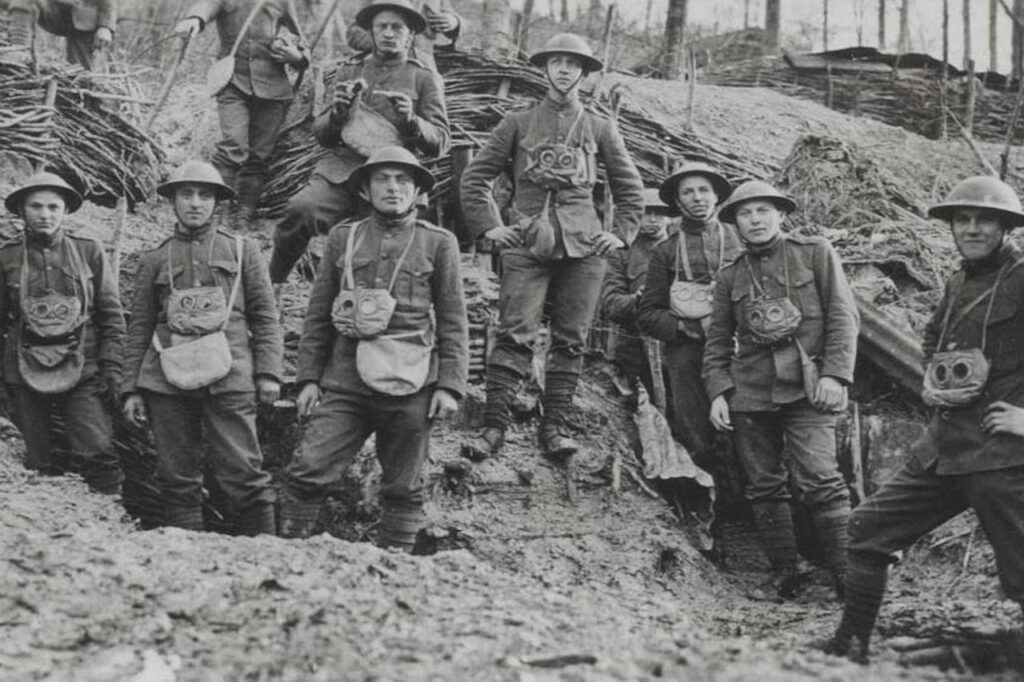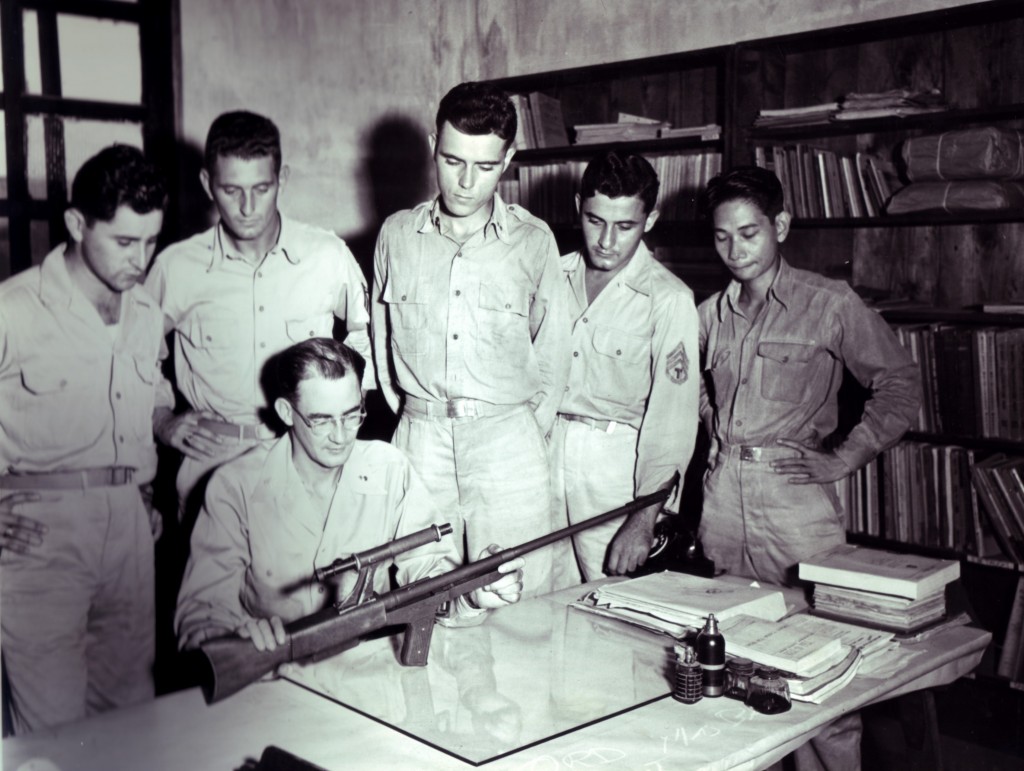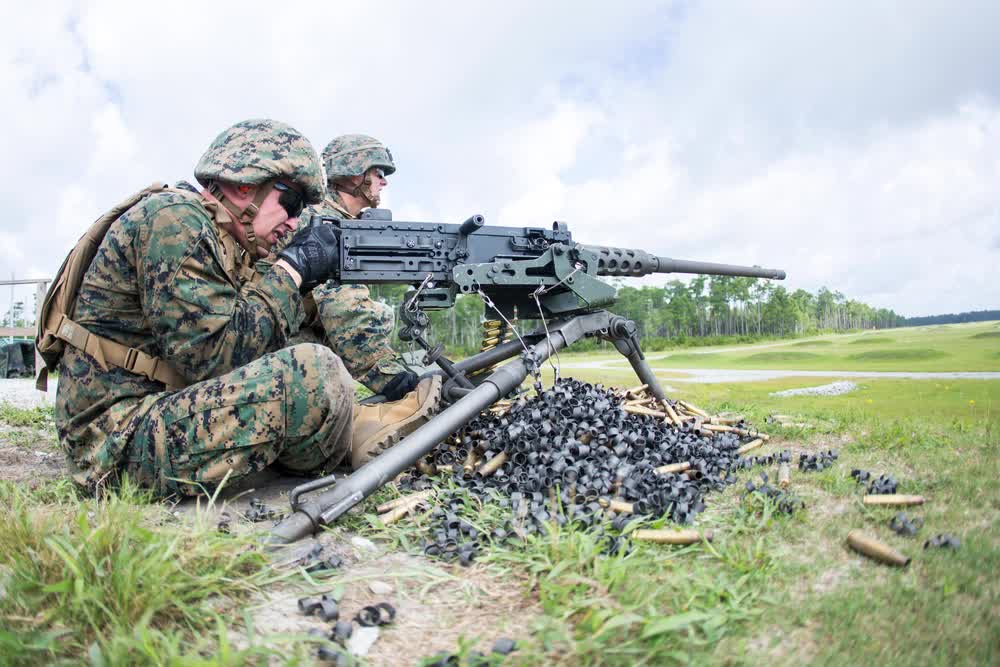Imagine being a soldier in 1835. Your weapon is likely some form of flintlock musket that fires a single round before needing to be reloaded. It’s smoothbore, probably a Springfield 1835 but could have been an even earlier model, likely firing a .69 caliber ball. If you’re a pro, you can reload it in, say, 15 seconds under the right conditions. That’s fairly terrifying, and you might resort to your bayonet a bit faster than you’d like. That was the situation most soldiers found themselves in, and that was how Samuel Colt sold his first weapon, the Colt Ring Lever carbine, a revolving rifle, to the United States military.
The Colt revolving rifle – A ring-lever design
The Colt Ring Lever Carbine was the first gun ever produced by Samuel Colt. It predated the Colt Paterson revolver and used a system we didn’t see much after.
The ring-lever carbine did not have an exposed hammer that is manually cocked and fired like a traditional Colt revolver. Instead, a small ring sat in front of its trigger and the user would pull the ring downward and backward toward the trigger, which cocked the weapon and rotated the cylinder.
This allowed the user to quickly ready the weapon to fire the next shot. The First Model Colt revolving rifles came in .34, .36, .38, .40, and .44 calibers; they all fired ball rounds and used percussion caps. They were loaded with black powder, of course, and held eight rounds.
The carbine featured a 32-inch barrel which made it absolutely massive. The Colt revolving rifle was still a big beast. It was one of the first multi-shot black powder weapons that didn’t rely on additional barrels to fire multiple shots.
Compared to a traditional musket of the time, the Ring Lever Carbine offered numerous benefits. First, you could fire eight rounds without having to reload. This gave someone armed with a Colt Ring Lever Carbine eight times the firepower of an average infantryman.
Related: These are the 5 best service rifles the US military has ever had
The Seminole Wars highlight the need for faster-firing weapons
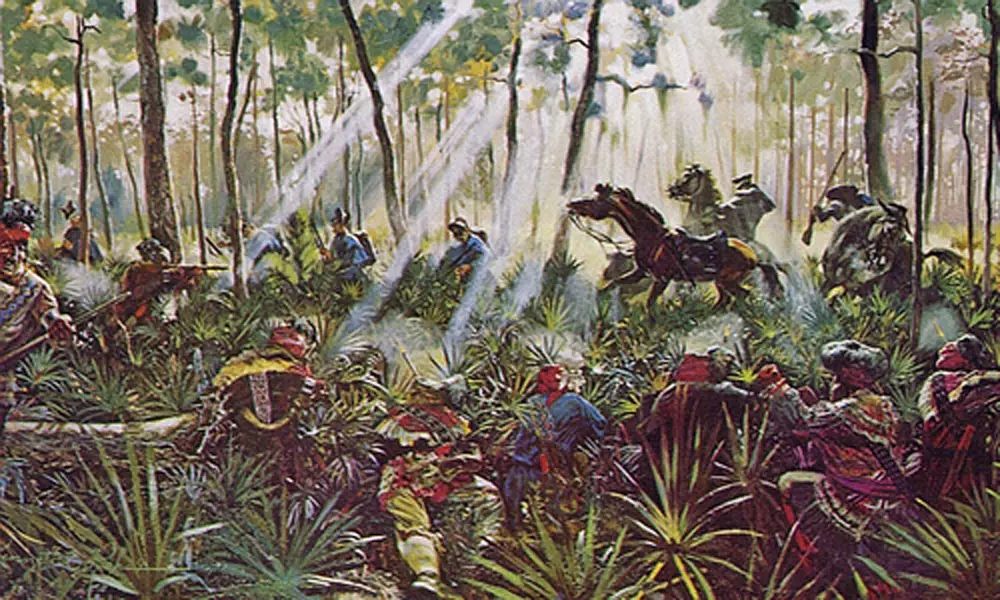
Samuel Colt was a great salesman and would often travel with his weapons, putting on displays, and even giving samples to influential people. In 1838, he went to Florida with 100 Ring Lever carbines to display to the men fighting the brutal Seminoles war. The war was extremely violent, and a few years prior, the musket-equipped soldiers under Major Francis Dade’s command were all but decimated.Â
The slowness of these carbines was exploited by the Seminoles, who would engage in vicious close-quarters fighting amongst the dense swamps and forest of Florida.
There was certainly a need for faster-firing weapons and Colt intended to demonstrate the benefits of his new rifle.
Related: The Smatchet was a beastly weapon for WWII commandos designed by the legendary William Fairbairn
The demonstration
Samuel Colt displayed the weapons to the Second Dragoon Regiment at the behest of Lieutenant Colonel William S. Harney. His display included a timed trial to show has fast the weapons could be fired and reloaded.
A shooter could fire the eight rounds in 12 seconds. When it came to reloading, the gun was obviously slow with the requirement to load eight cylinders before it was ready to fire. An infantryman could fire eight rounds, reload, and fire another eight rounds in two minutes and 49 seconds.
Colt also showed that the weapon was safe by scattering loose black powder around the cylinder and firing the weapon without igniting the black powder. (Oddly enough, the main problem, later on, would turn out to be the weapon’s tendency to ignite loose powder and chainfire all eight rounds at once.)Â
Next, he loaded the revolving rifle and lowered it into the water for 20 minutes. He then removed the rifle and fired eight rounds without issue.
Thanks to its rifled barrel, the weapon was accurate. The display impressed the right people, and the Dragoons ordered 50 rifles for 125 dollars apiece. That’s over 4,000 dollars per rifle when adjusted to 2022 prices, which is extremely expensive for an individual carbine.
Related: Did you know that the last trench gun survived until the Iraq War?
The Ring Lever Carbine in war
The rifles were issued to experienced soldiers who could make the most out of their potential. With only 50 in service, the Dragoons were devastated when they lost 30 of them to the Seminoles, however, they eventually recovered 16.
The revolving rifle obtained a good reputation among the Dragoons. After a year of service, only two were reportedly damaged. Lieutenant Colonel Harney commented, “I honestly believe that, but for these arms, the Indians would now be luxuriating in the Everglades of Florida.”
The rifles were prone to failure on occasion and were seemingly delicate compared to the simple flintlock muskets of the time. Even so, these weapons supposedly made quite a difference in fighting the native indigenous people.
Related: The RAW, aka the Rifleman’s Assault Weapon, was the deadliest bowling ball ever created
Why it never succeeded
The weapon had a few issues: First, they were extremely expensive and it was unaffordable to arm an entire military force with them, especially considering how notoriously sparing the Army is when it comes to infantry rifles. The revolving rifle was also challenging to use and required more training than a traditional musket.
Another issue was the weapon’s risk of chainfiring. When this occurred, multiple cylinders would fire at one time, and when all eight cylinders erupted, the gun could become a very inefficient grenade and harm the user.
The gap between the cylinder and the barrel also allowed a partial explosion to escape. This made the rifle awkward and unbalanced as the support hand had to remain behind the cylinder.
Revolving rifles would continue to evolve and would see some limited use in the American Civil War and other conflicts. However, with the advent of metallic cartridges and lever-action rifles, the revolving rifle faded away. Still, it holds the honor of being the United States military’s first repeating rifle.
Read more from Sandboxx News
- Hell in the Highlands: Losing a warrant officer in the mountains while moving against Korean positions
- Russia is using deadly air tactics to stop Ukraine’s counteroffensive
- The CIA used miniature models to meticulously plan high-stakes operations
- MARSOC Raiders to deploy in smaller, tech-loaded teams as conflict gets more complex
- X-Planes: Experimental aircraft that changed the world without you knowing
